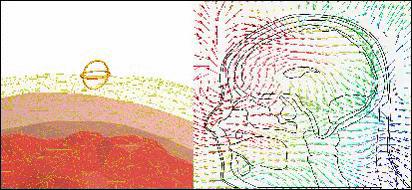Jeffrey M. Elloian, Gregory M. Noetscher, Sergey N. Makarov, Alvaro Pascual-Leone, Worcester Polytechnic Institute and Beth Israel Deaconess Medical Center, Volume 61, Issue 6, Page: 1676-1683

Characterizing the human head as a propagation medium is vital for the design of both on-body and implanted antennas and radio-frequency sensors. The following problem has been addressed: find the best radio-frequency path through the brain for a given receiver position – on the top of the sinus cavity. Two parameters: transmitter position and radiating frequency should be optimized simultaneously such that (i) the propagation path through the brain is the longest; and (ii) the received power is maximized. To solve this problem, we have performed a systematic and comprehensive study of the electromagnetic fields excited in the head by small on-body magnetic dipoles (coil antennas). An anatomically accurate high-fidelity head mesh has been generated from the Visible Human Project® data. The base radiator is constructed of two orthogonal magnetic dipoles excited in quadrature, which enables us to create a directive beam into the head, as this novel antenna type generates a beam at 45 degrees into dielectric interface. The CSF and ventricles inside the head form what approximates a dielectric waveguide to channel this beam into the sinus cavities. We have found at least one optimum solution. This solution implies that a distinct RF channel may be established in the brain at a certain frequency and transmitter location. In addition to microwave tomography of the human body, such an antenna can potentially be used to screen for detrimental conditions such as Alzheimer’s disease and osteoporosis. If such ailments cause the dielectric properties of tissues to change, then the channel will be altered, which allows for possible detection.
Keywords—Biomedical applications of electromagnetic radiation, Electromagnetic propagation in absorbing media, Medical diagnosis, Mesh generation, Surface waves

